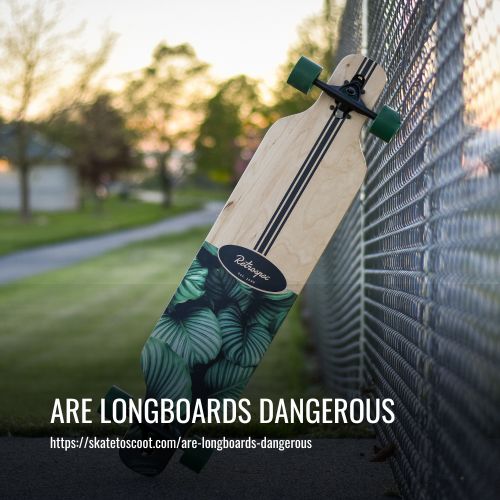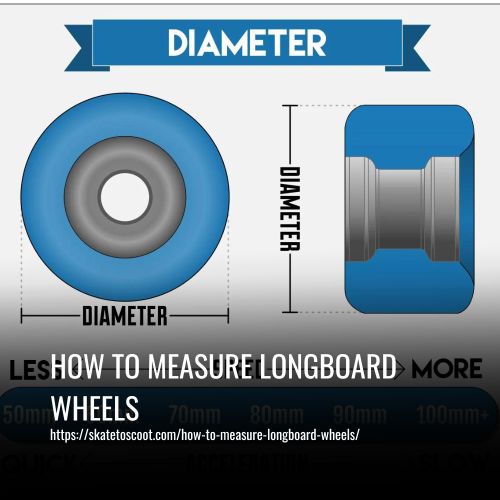As an Amazon Associate we earn from qualifying purchases.
Can you ollie on a longboard? Technically, yes, but it isn’t something that is generally recommended. Longboards are designed for stability and cruising, making tricks such as an ollie too dangerous to try.
Attempting an ollie on a longboard can cause the board to lose its balance and wobble, which could put the rider in danger of injuring themselves. If you decide to try an ollie on your longboard, be sure that you are experienced and have a good amount of confidence in yourself before attempting the maneuver. Otherwise, you risk serious injury!

How to Ollie on a Longboard
Learning how to ollie on a longboard is incredibly important if you’re looking to advance your skills. It’s one of the most basic tricks and it requires dedication and practice in order to master it. It may appear effortless and carefree, but don’t be fooled – it takes time to perform the perfect Ollie on a longboard!
To help you out, we have put together this guide to show you the best way of performing an Ollie on your longboard.
1. Acknowledgment And Preparation
Learning how to Ollie on a longboard is no easy feat. It takes dedication, patience, hard work, and most importantly an acknowledgment of the risks involved. Even professional skaters like Tony Hawk started as inexperienced beginners and were persistent in their journey learning how to do it well.
Therefore, preparation is key when it comes to mastering the art of Ollie on a longboard. Make sure you are wearing protective gear when attempting this trick; this includes padding for your elbows, knees, and wrists.
In addition, avoid doing too many tricks in a row as this can significantly increase the chances of an injury occurring. Finally, always be mindful of your surroundings while skating so that you don’t get caught up in landscapes or obstacles that can have an effect on your board.
2. Understand The Anatomy Of The Longboard
To master an Ollie on a longboard, you’ll need to have a clear understanding of the board’s anatomy. The various components of the board include its tail, nose, trucks, and wheels.
It’s important to know how each one affects balance and movement while your ride in order to successfully pull off an Ollie.
3. Step Up On The Board
When you’ve decided that you’re ready to take a longboard for a spin, the first step is to ensure that you are comfortable with it. Familiarize yourself with its balance, stability, and control before fully stepping up on it.
This means understanding the dynamics of your board and taking the time to properly get acquainted with the nuances of its construction. Taking the time to really get to know your board can be beneficial when attempting tricks and maneuvers on your longboard.
Once you are comfortable enough with your longboard, then all that’s left is to step up on it!
4. Proper Foot Position
Proper foot position is essential for performing an Ollie on a longboard. It is important to get into the correct stance in order to do it correctly.
When you are ready to start, your front foot should be close to or in the middle of the board while you stand on its tail. Ensure your front foot is aligned with your kicktail or tail while having the ball of your back foot lightly resting on the same kicktail or tail.
It’s also important to ensure that both feet are firmly planted and balanced on the board before attempting to do an ollie. Having proper positioning will ensure that you have maximum control during the trick and help you land it successfully without any accidents!
5. Upper Body Motion
Learning how to Ollie on a longboard is not only about perfecting your footwork – the upper body motion also plays an important role. When you are in the correct position with your feet, you must bend and crouch your torso to exert the necessary pressure on your deck.
It’s important not to overdo it – a light, fluid moment with slightly more than a 90-degree bend in the knees is ideal. Too much crouching or bending over can cause instability and throw off the trick. With practice and patience, you’ll be able to master the Ollie with perfect upper body motion!
6. Jump
Jumping is an important part of the Ollie on a longboard. You must build up enough pressure and positional energy with your feet in order to execute the jump correctly. It’s all about technique, so don’t just jump like a frog with all your legs up or you’ll be landing too hard and risk getting hurt!
The trick is to jump one foot at a time. First, your front foot should jump up, and then your second foot. Ensure that the side of your front foot lightly grazes the nose of the board when you move. At the same time, press down with your back foot to make the rear kick touch the ground while your front kick lifts off. This should create a popping sound when both kicks touch the ground.
All in all, you are essentially using both feet to flip up the tail and brush against it with your chosen foot as you lift off from the board as part of a successful Ollie!
7. Descend
Descending is an essential step in mastering the Longboard Ollie. When coming down from a jump, it’s important to level your feet – and consequently, the board – as soon as possible. Imagine the board as a straight line: when you’re in the air, that line has an angle to it.
It is important to keep your feet level until your board returns to its normal upright position. Additionally, be sure to keep your feet where they were when you jumped: one at the center, one near the rear kick.
Doing all of this will ensure that the weight of your body will hit evenly on both sides and that excessive pressure won’t cause your board to snap in half! Make sure you master descending for successful and safe Longboard Ollies!
8. Practice
Practice makes perfect and this holds true when it comes to learning how to Ollie on a longboard. It is not an easy maneuver but with time, dedication, and patience you will be able to master it. Break the trick down into several steps and practice each of them until you have them memorized.
When practicing, make sure that you are wearing the proper safety equipment so that you can ensure your well being.
FAQs
Longboards may be large, but they can still be used to do various tricks like flips and ollies. In addition, you can also use your longboard for slides, jumps, and turns.
Doing an ollie on a longboard can be quite difficult due to the lack of a kicktail, which makes it hard to get a large longboard into the air.
Longboards are ideal for beginners since they require less balance due to their larger boards and wheels, which provides more stability. Skateboards, on the other hand, can be easier to learn tricks with.
Cruiser skateboards usually come with a nose/kicktail, so you can do ollies and flip tricks. Though, it won’t be as effortless as with street skateboards, which are made for this purpose. You’ll find that performing such tricks is easier with a longboard in comparison.
Doing an Ollie while in motion is much more difficult than when standing still. Don’t rush it, go slowly and focus on getting your board airborne.
Conclusion
In conclusion, it is possible to ollie on a longboard, but it’s important to practice your technique and make sure you are comfortable with the board before you go out and truly learn it. Those who take the time to properly practice their ollies, they will be rewarded with big air tricks, smooth slides, and much more.
Amazon and the Amazon logo are trademarks of Amazon.com, Inc, or its affiliates.



